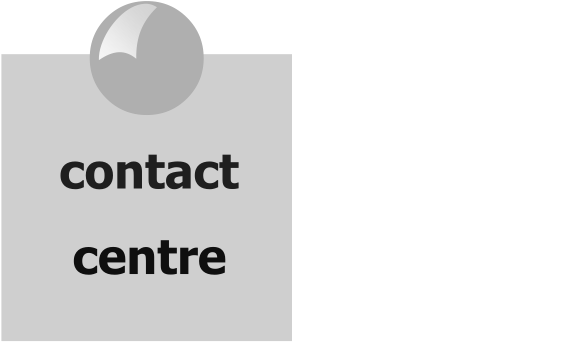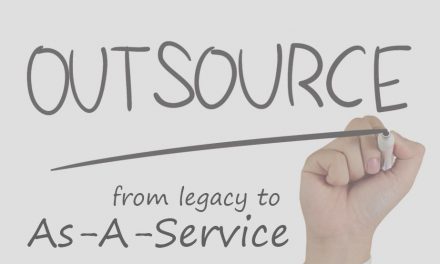Great Customer Service Actually Requires Very Little Effort !
Definition of Loyalty
Interestingly there is an inverse correlation between ‘customer effort’ and ‘customer loyalty’. The higher the effort required by the customers, the lower their loyalty; the lower the effort required, the higher their loyalty. This very much echoes the Amazon philosophy that the best service is no service.
Why the Financial Service Industry Needs to Simplify Every Customer Interaction, Keep it simple is best.
In the early 1990’s I remember reading the following story in the IT press:
McConnell got so fed up with not being able to talk to a human at his bank that he wrote a program that dialled eight different branches of his bank automatically. The program then left the following recording: “This is an automated customer complaint. To hear a live complaint, press button one.” Having pressed the appropriate button, the hapless bank employee would then hear: “The customer is unable to come to the phone right now, but your call is very important. Thank you for being patient.” Finally, the tape recording revealed McConnell’s name and phone number. He described his action as “just your basic customer protest.”
The world of financial services and technology has changed hugely since then, but I think for many of us, the same feelings still exist. Doing business with many financial services organisations feels difficult and frustrating. The technology and processes seem designed to make life easier for the organisation, not the customer. Everything seems product-centric, not customer-centric. Despite this, we often remain loyal to the institutions we started with as a teenager. And as the press often likes to quote – on average we stay with our bank longer than we stay with our partner!
However, there’s a feeling that we’re now at an inflection point, or jumping on a new S-curve as McKinsey’s Richard Foster describes it. Millennials, Generation Z, mobile technology, social networking, crowd-funding, new regulatory frameworks, switching services, internet giants like Google taking on the insurance world… are all affecting financial services. No longer can our loyalty be taken for granted.
So how should the Financial Services industry react?
Resent research has shown that the new battleground for customer loyalty is focusing on effortless experiences. Somewhat surprisingly it found that:-
- Delight doesn’t pay
- Customers prefer to self-serve
- Customer service interactions tend to drive disloyalty, not loyalty
- The key to mitigating disloyalty is reducing customer effort
So there is an inverse correlation between customer effort and customer loyalty. The higher the effort required by the customers, the lower their loyalty; the lower the effort required, the higher their loyalty. This very much echoes the Amazon philosophy that the best service is no service.
The good news; there are dozens, if not hundreds of ways that financial services organisations can reduce customer effort across the whole customer lifecycle. For example, at my bank’s ATM recently I inserted my debit card and it presented me with just one option – your usual £50 and no receipt? Brilliant. No spurious choices that I never take. It only saved me a few key keystrokes and a few seconds, but I really appreciated it. Their mobile app is also great for checking my account and paying bills. And Apple Pay lets me pay easily and quickly. But as soon as I want to get help I have to swap channel and either email or call. That’s a lot of effort. I don’t want to leave my app to get help! Another great example of low effort is Number 26 bank in Germany. Everything is mobile-first, including the opening of the account, which takes 8 minutes via a video call. Now that’s impressive. And then there’s Berkshire Hathaway Travel Protection, which monitors the airline timetables and automatically pays out compensation if the passenger is delayed and then texts them to say the money has been transferred to their account.
Other examples of effortless customer service
- Using voice biometrics (rather than the dreaded touchtone menu) to reduce the time to identify and verify (ID&V) the customer.
- Using the Touch ID or passcode on the mobile phone, in conjunction with the mobile app, to ID&V the customer.
- Proactively working out what a customer can borrow, before they’ve asked for a loan, so they don’t have to wait for a decision.
- Having a Single Customer View across all touch-points, so customers never have to repeat themselves and can move from channel to channel and continue the conversation from where they left off.
- Offering a wide choice of channels, such as branch, call, email, SMS, video, social media, website, web-chat and yes even letters!
- Being open 24 x 7, 365 days of the year, or 366 in 2016!
- Sending out proactive notifications about the account status or the stage something is at in the application process, so the customer doesn’t have to chase for updates.
- Using video in-branch to connect the customer to a remote expert, rather than asking them to come back another day.
Many of these improvements or innovations seem insignificant, but added up they can lead to huge improvements in overall performance and service levels. It’s what the sporting world calls the “aggregation of marginal gains” and it’s usually what separates the winners from the losers.
New customer service metrics for a new world
Of course, this new low effort world requires new measurements. Customer satisfaction and Net Promoter Scores have proved useful, but these now need to be augmented with a Customer Effort score. How easy were we to do business with? How easy was this to buy? How easy was it to get help? How easy was it to complain? How easy was it to find what you wanted? And so on. It’s about turning the organisation upside-down or inside-out and replacing “How we can sell more of these?” with “How can we make it easier for our customers to buy more of these?” It’s a different mindset.
And the irony in all of this? Although the effortless experience research found that delighting customers doesn’t pay (the payback from wowing them is marginal), by making the experience effortless, they will be delighted!
Contributions by Dave Thomson





Recent Comments